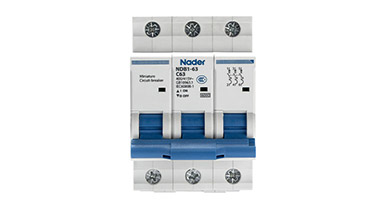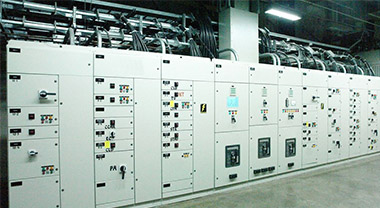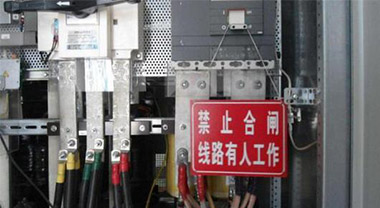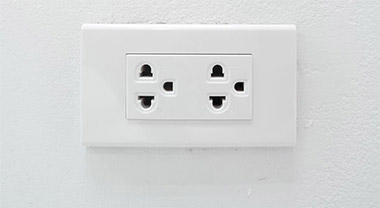Complete analysis of the cause of circuit breaker tripping
The loss-of-voltage release of the automatic air switch of the power supply system is an electromagnet. At the moment of loss of power, the armature is released under the drive of the spring, and then the trip mechanism is driven, and the air switch completes the tripping operation. In the event of lightning in the high-voltage power distribution system, if the loss-of-voltage release can delay for a few seconds and then take off again, the power supply system can maintain normal power supply after the high-voltage system voltage returns to normal in an instant, thereby significantly reducing the production of light hydrocarbon devices from lightning. Impact. In order to prevent the armature of the high-voltage system from being released by the instantaneous loss-of-voltage tripper after lightning, the following three technical solutions have been proposed after analysis:
- Tie the armature of the electromagnetic loss-of-voltage release to prevent its release. This can achieve the purpose of the air switch not jumping during lightning. However, when the system is permanently de-energized, the air switch cannot be operated and loses the meaning of existence. Undesirable;
- The UPS system is used to supply power to the loss-of-voltage release. After repeated tests, it is not advisable because of the complicated wiring of the equipment, poor reliability, and the inability to achieve a stable delay of the start-up;
- Change the power supply of the voltage-loss release coil to a DC power supply, and connect an energy storage capacitor in parallel with the coil. When the system voltage is too low, the capacitor will automatically release electrical energy to the voltage-loss release coil to maintain a certain time of absorption. In the closed state, after the energy storage capacitor is discharged, the loss-of-voltage release loses power, and the air switch automatically completes the delayed take-off operation. The modification method is similar to AC starting and DC silent operation of AC contactor. The wiring method is simple and the reliability is high after testing, so it is adopted.
What to do if the air switch trips?
1. Determine whether the tripped air switch is the main switch in the distribution box at home or the branch outlet switch. If the main switch is not tripped, but only the branch switch is tripped, it means that there is a problem with the power supply circuit of the high-power electrical appliance, that is, multiple high-power electrical appliances are connected to the same branch switch. In this case, adjust the high-power electrical circuit to a light load The shunt switch is sufficient (it is recommended to use a separate shunt switch for high-power appliances);
2. If the shunt switch is not tripped and the main switch is tripped, calculate whether the sum of the power of the household appliances exceeds the approved power supply capacity (call 95598, and check the approved power supply capacity through the customer number), and check whether the total switch capacity matches the approved power supply capacity .
① If the sum of the power of household appliances exceeds the approved power supply capacity, reduce the number of household appliances used at the same time (especially high-power household appliances), and apply to the power supply company for power increase;
② If the total power of the household appliances does not exceed the approved power supply capacity, but the total switch capacity is less than the approved power supply capacity, the main switch that matches the approved power supply capacity must be replaced.
At the same time, it should be reminded that some high-power electrical appliances have a large starting current, and the influence caused by the starting current should be considered when calculating the power.
Generally speaking, after a trip occurs, the first thing to do is not to contact for inspection or maintenance immediately, but to first determine whether it is a false trip. If the current and voltage fluctuate for no reason, it is likely to be a malfunction of the intelligent low-voltage circuit breaker operating structure.
Recently, I often receive calls from customers about the tripping of molded case circuit breakers. Mainly some universal circuit breakers, such as DW series circuit breakers, have tripped, and they cannot be closed automatically or manually. I consulted the engineers of the factory, and at the same time consulted some related materials, I will summarize here. However, it should be noted that there are many reasons for tripping, which cannot be applied to all situations. The list is also some of the most common ones, mainly for universal circuit breakers.
After it is clear that the circuit breaker has indeed tripped, the cause should be investigated. Generally speaking, there are two main reasons for circuit breaker tripping. The first type is short circuit. Such as in a humid environment is prone to similar situations. I remember a customer reported that a DW16-2500 universal circuit breaker appeared to be normal in sunny days and often tripped in rainy days, which was caused by a short circuit. Finally, it was checked that the control circuit was short-circuited, which caused the second incoming wire to burn and cause a trip.
The second type of reason is the load. For a simple example, if the current of the circuit is 200A and the frame current of the circuit breaker is only 100A, when the motor is connected, the circuit is normal, but the circuit breaker is obviously overloaded. Will cause the circuit breaker to keep tripping. Regarding load tripping, the most common thing is that in our daily life, the leakage circuit breaker (such as DZ47le-32 leakage circuit breaker) caused by excessive current trips. Generally speaking, tripping based on load should not happen, and parameters such as the rated current of the line should be known when selecting the model. Here is also a little knowledge: if the circuit breaker trips at the moment of starting, it is caused by a short circuit. Tripping during startup is caused by overload.
After analyzing the two types of reasons for the tripping of the isolation circuit breaker, some common analysis and treatment methods are briefly summarized. The first is to determine whether it is a circuit problem or a circuit breaker problem. The general process is:
Observe whether the primary circuit is burnt, whether there is a peculiar smell, and whether the secondary control circuit in the low-voltage cabinet is faulty
1. When there is a fault point, it means that it is a circuit problem and has nothing to do with the circuit breaker.
2. There is no obvious fault point, and the circuit breaker cannot be closed even when there is no load, it means that the circuit breaker cannot be put into operation after tripping, which is a problem of the circuit breaker itself.
Generally, the circuit is easy to solve, but if it is a circuit breaker problem, further inspection is needed. The possible reasons are: mechanical system failure, free release wear, operating mechanism failure, etc. Here are two situations:
A. Ground fault trip (ground fault indicator light is on) processing method is to check the breaking current value and action time of the trip unit. If it is confirmed that there is a ground fault, it should be found and eliminated immediately. If there is no ground fault, check whether the ground fault current setting is appropriate, if the setting is not appropriate, modify the ground fault current setting.
B. The general solution for undervoltage release trip and mechanical interlock action is: check whether the power supply is lower than 70% Ue and whether the undervoltage release and control unit are faulty.
There are many reasons why the circuit breaker cannot be closed after tripping. For example, the undervoltage release fails to close and the circuit breaker cannot be closed because the voltage is too low or the undervoltage release coil loses power, which will result in the failure to reclose. On the topic of not being able to close, I will explain in detail in a later article. Some of the statements in the article are just a summary of experience and cannot solve all problems. If there is a problem, it is best to ask an experienced engineer to solve it or contact the corresponding manufacturer.
What should I do if the leakage switch at home frequently trips? Why does the leakage switch frequently trip?:
1. The voltage of the power supply line is too high.
This is very dangerous, and it usually occurs in residential buildings that are powered by a'three-phase four-wire' system. At this time, first check whether the two wires of the line are live; second, check whether the left and right neighbors are also tripping; third, use a multimeter to measure the incoming line voltage. Never forcibly close the low-voltage circuit breaker, otherwise the electrical appliances will be burnt out, or the fire will be caused.
2. Electrical leakage or short circuit.
When it is found that the electrical equipment used is leaking, just unplug the electrical equipment with the leakage fault, and then reclose the low-voltage circuit breaker to send power. If you find a line leakage or short circuit, you must ask an electrician to deal with it. After the low-voltage circuit breaker trips, first disconnect all the shunts, and then close them one by one to send power. When a circuit is closed, the low-voltage circuit breaker cannot be powered on, that is, the branch is faulty, this circuit should be disconnected, and other branches should be closed for power transmission. After the faulty shunt problem is detected, the power can be sent after repairing.
3. Does not match the load.
The actual electrical load of the household is greater than the rated current of the low-voltage circuit breaker on the line. It usually occurs after newly installed or newly added high-power household appliances such as air conditioners and electric water heaters. The matching air switch must be replaced.
4. Poor installation.
The lead wires of each pile head are not connected firmly and loose for a long time, which will cause the pile hair to heat and oxidize, burn the outer insulation of the wire, and emit sparks and burnt smells, causing the line to undervoltage and the air switch to operate.
In addition, the editor reminds that after the above reasons are found and eliminated, if the household leakage switch (the leakage protector is assembled with the low-voltage circuit breaker, and has overload and short-circuit protection functions) still cannot be closed for power transmission, please check the protector If there is no problem with the incoming and outgoing pile heads and incoming line voltages, disconnect each group of outgoing lines separately to check whether there is an internal line failure. If there is no problem with the outgoing lines of each group, or the power still cannot be sent, replace it with a new one The leakage switch is out.




